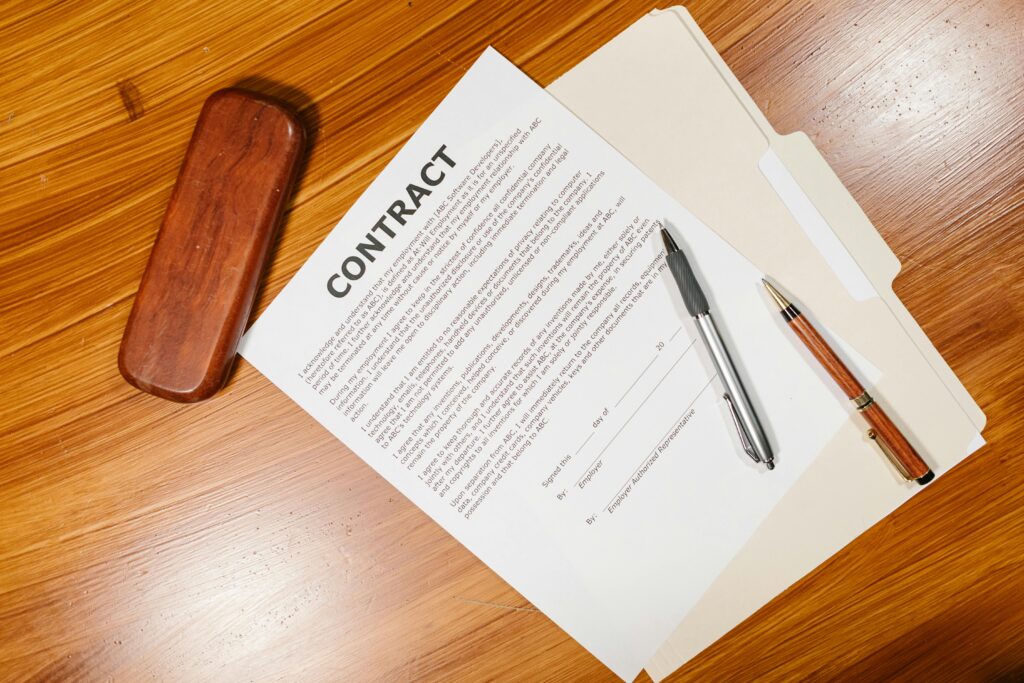You’ve built something new. Maybe it’s code. Maybe it’s a machine learning model. Maybe it’s just a clever twist on how something’s done. You’re moving fast. You’re building the future. The last thing you want to do is stop everything to figure out how patents work.
Why DIY Patents Used to Be a Bad Idea
The real cost of going it alone
For years, the idea of filing your own patent was seen as risky for a reason.
Not just because it was hard, but because the risks were invisible. You didn’t know you were doing it wrong until it was too late. That’s what made it dangerous.
Founders would spend weeks pulling together an application, send it off, and feel like they had “protected” their idea.
But what they really had was a weak claim—one that left out key parts, used vague language, or failed to meet strict patent office standards.
The issue wasn’t intelligence. Most founders are brilliant at what they do. The issue was that patent law is its own language.
And if you’re not fluent, you don’t know which words matter.
You don’t know how a small change in phrasing could mean the difference between getting approved and getting rejected—or worse, getting approved but ending up with something worthless.
This wasn’t just a waste of time. It could lead to a false sense of security.
You’d think you had IP, but when it came time to defend it—or use it to raise money or negotiate deals—you’d find out it didn’t hold up.
And by then, you’d already disclosed your invention. You couldn’t file again. You couldn’t fix it. You were exposed.
Why bad patents hurt more than no patents
Here’s something most people don’t realize: a weak patent can be worse than no patent at all.
If you file something on your own and it’s too vague, too broad, or too narrow, you may end up stuck with it.
And if a competitor challenges it, you won’t just lose the case—you’ll lose time, money, and credibility.
Investors will see right through a flimsy patent. So will large companies if you’re trying to partner or get acquired.
They have people who know how to dissect patents. If they see yours isn’t solid, it can hurt your leverage in a deal.
And internally, bad IP slows you down. You start making decisions based on what you think is protected—when in reality, you’re open to being copied.
It’s not about filing a patent. It’s about filing one that actually works.
Why the old DIY tools made things worse
There have been tools around for years that claimed to help you file patents on your own.
Most of them were form-fillers. They gave you blanks to complete, basic templates, and maybe some prompts.
But they didn’t teach you what mattered. They didn’t check for real quality.
And they didn’t tell you when your invention needed a stronger explanation, or when your claims overlapped with something already filed.
Even worse, most of those tools had no real legal review. Once you hit submit, you were on your own.
If it got rejected, that was your problem. If it got approved but was easy to work around, you’d never know until it was too late.
These platforms treated patent filing like a tax form. But patents aren’t about checking boxes.
They’re about capturing value. And if the tool doesn’t help you think like an examiner or a litigator, it’s just paper.
How founders can protect themselves from DIY mistakes
If you’re thinking about filing a patent, here’s what you need to do first: shift your mindset. Stop thinking of the patent as a form. Start thinking of it as a tool for leverage.
Ask yourself: What’s the core thing I’m trying to protect? What makes it new? What part would hurt the most if a competitor copied it?
Then, write that down. Not in legal terms. Just in your words. Treat it like you’re explaining it to a new engineer.
Get specific. What inputs go in? What happens inside the system? What comes out?
That’s the start of a good patent. Clarity.
Then—and this is the key—don’t stop there. Use a system that takes what you wrote and turns it into something legally defensible.
Not just cleaned-up language, but structured insight. One that checks your draft against real standards.
One that pulls in attorney oversight—not just to file for you, but to help you learn.
Because the biggest unlock is not just filing once. It’s knowing how to do it again and again. That’s how you build an IP engine.
What today’s founders really need
Speed matters. Cost matters. But what matters most is confidence. Confidence that what you’re filing is strong.
Confidence that you’re not missing something. Confidence that your patent will still mean something five years from now.
Today’s patent software needs to offer more than forms. It needs to teach, guide, and back you up.
It needs to give you leverage. It needs to protect your time, your vision, and your future value.
And most importantly—it needs to work. Not just on paper. In real life.
That’s why smart founders aren’t just “doing it themselves.” They’re doing it the right way—with better tools and better support.
Software That Changes the Game
From legal chaos to clarity and control
Before smart patent software existed, filing meant friction.
You had to juggle meetings, email threads, legal jargon, and often people who didn’t fully understand your tech.
It created delays. It drained energy. Worst of all, it introduced errors—tiny gaps in your explanation that could weaken your patent and cost you down the line.
Now, things are different. Modern software isn’t just about speed. It’s about clarity. It gives you a clean way to think through what you’ve built.
It helps you unpack what’s valuable and turn it into something legally powerful.
You no longer need to pause your momentum to “do legal.” Filing becomes part of your product flow.
You explain your invention once—how it works, what makes it new, why it matters. The software helps translate that into patent-ready language.
Then, a real attorney steps in and sharpens it. This saves weeks. It saves thousands. More importantly, it saves your edge.
Capturing the gold hidden in your process
Many founders miss this: your invention isn’t just the end product. It’s the unique way you got there.
The decisions you made. The way your system scales. The shortcuts you found that others haven’t.
That’s what real patent software helps you spot. It doesn’t just ask what you built—it asks how.
It walks you through the technical path and helps you identify protectable steps in your logic, your code, your flow.
For example, you might think your product is just “an AI tool that summarizes contracts.” But the real IP might live in the way your NLP model parses certain clauses.
Or how you fine-tune for tone. Or how your backend handles document classification in real time.
Without the right prompts, you might gloss over that. But smart patent software pulls it out of you. It doesn’t let you skip the gold.
And once it’s written down, it becomes real. Tangible. Defensible. That’s when you’re not just filing a patent—you’re capturing value.
A foundation for scalable IP
Another shift this software makes: it helps you build an IP engine, not just a one-off filing.
Once you’ve gone through the process, you start seeing the patterns. You learn how to describe inventions in the right way.
You understand what’s protectable and what’s not. You start identifying new IP opportunities in your roadmap.
This means every new feature, every optimization, every workflow tweak can be considered strategically. Is it just a product update—or is it also patentable?
Great patent software doesn’t just spit out documents. It changes how your team thinks. It brings IP into the heart of your build cycle.
Suddenly, your company isn’t just creating products—it’s building a growing wall of defensible innovation.
That’s how you create long-term leverage.
A better way to work with attorneys
The right software doesn’t replace lawyers. It makes them 10x more useful.
Instead of spending hours trying to explain your invention to someone outside your field, you walk in with a clean, detailed draft.
The attorney isn’t starting from zero. They’re editing and enhancing your vision, not translating it from scratch.
This creates better patents. It cuts miscommunication. It saves everyone time—and cost.

And it means you’re not guessing whether your legal partner understood you. You’re building the foundation, and they’re reinforcing it.
This new model is faster, cheaper, and far more aligned with how startups operate. You keep control.
You keep momentum. And you still get the legal firepower where it counts.
Making IP strategy part of your launch playbook
The smartest founders today don’t treat patents like paperwork. They treat them like leverage.
A strong patent application helps you close funding. It helps you win enterprise deals. It signals seriousness to the market.
It gives you a reason to say no when someone wants to copy you—or a reason to negotiate when they want in.
And software makes that leverage accessible.
It lets you move fast without leaving gaps. It gives you a process you can trust. And it turns IP into a strategic asset, not just a line item.
You don’t need to become an expert. You just need the right tool—and the right support—to capture what you’ve already created.
Speed Without Sloppiness
Why timing is everything—but quality is still king
In the world of startups, timing is your biggest advantage. If you build fast and ship fast, you get ahead.
But when it comes to patents, moving fast has to be paired with moving right.
Filing early doesn’t mean filing weak. The goal isn’t just to check a box—it’s to lock in meaningful protection that lasts.
A lot of early-stage teams assume there’s a tradeoff between speed and quality.
That if you want a strong patent, you have to slow down, spend big, and wait on attorneys. Or if you want to keep momentum, you have to rush a bare-bones filing and hope it sticks.
Modern patent software breaks that tradeoff. It lets you move quickly without cutting corners.
You don’t need to compromise depth for speed. You just need the right process.
Building protection into your product rhythm
If you treat patent filing like a separate legal event, it becomes a bottleneck. It sits outside your roadmap. It slows down launches.
And it gets pushed until it’s too late.
But what if you made it part of your build cycle?
What if, right after each sprint, you reviewed the features or systems you shipped and asked: is this new? Is this valuable? Is this worth protecting?
That’s where software comes in. It lets you capture IP in real-time. You don’t need to schedule meetings or explain your tech from scratch.
You just plug in what you’ve built, answer smart prompts, and start shaping a real filing.
This turns IP into part of your rhythm. You’re not doing big legal projects—you’re just adding protection as you go.
It’s low friction. It’s fast. And it becomes a competitive habit.
Avoiding the trap of “good enough” filings
One of the most dangerous things a founder can say is: “We’ll just file something basic for now.” That mindset leads to half-baked applications.
Vague language. Broad claims with no support. These filings get shredded during examination—or worse, after they’re granted.
Speed doesn’t mean skipping strategy. It means being efficient with focus.
When you’re moving fast, the key is to zero in on the core innovation. The piece no one else has.

The engine of your edge. Protect that clearly and deeply. Don’t try to cover everything. Cover what matters—thoroughly.
Patent software helps you do this by guiding your thinking. It asks: what’s the technical heart of your invention?
What’s the specific problem you’re solving? What part of the process is new, and how exactly does it work?
These prompts push you past surface-level descriptions. They keep your filing sharp, even on a tight timeline.
How to stay fast at every stage of growth
Startups change fast. What you’re building in month three is different from what you’re scaling in year two.
But your approach to IP can stay agile—if your tools are built for it.
Great patent software doesn’t slow down as you grow. It adapts to how your team works.
Early on, it helps founders capture initial breakthroughs. Later, it helps teams file continuously—across product lines, updates, and integrations.
It can grow with your business, help you manage multiple filings, and keep everything organized in one place.
So you’re not scrambling every time you launch something new. You’ve got a repeatable, fast process that doesn’t sacrifice quality for pace.
This gives you more than just protection. It gives you peace of mind. You know your IP is covered, even as your company evolves.
Filing fast, winning long-term
Speed is your weapon—but only if you use it wisely. Rushing a filing isn’t real speed. That’s just risk in disguise.
The right strategy is about fast clarity. Getting your invention down clearly.
Explaining your tech in a way the patent office—and your competitors—can’t ignore. Filing early, but filing smart.
With modern patent software, you’re not taking a shortcut. You’re choosing a better route. One built for how startups move.
One that gives you speed, without ever losing strength.
Control You Can’t Get From Law Firms
Why outsourcing your invention can backfire
When founders hand off their patent work to a traditional law firm, they often assume they’re doing the right thing.
They think they’re buying expertise. What they’re actually giving up is insight and control.
Suddenly, their invention is being described by someone who didn’t build it, who doesn’t live in the product, and who may not fully grasp the tiny, powerful details that give it value.

This isn’t about the attorney’s skills. It’s about the translation gap.
Your invention is the result of countless decisions—technical choices, architecture designs, trade-offs only your team understands.
The more layers you add between you and the patent application, the more diluted that story becomes.
Law firms often work from a template. They take your email, maybe a diagram, and create something that sounds legal.
But sounding legal isn’t the goal. Accuracy is. Depth is. Strategic coverage is. If a key part is left out or poorly explained, the patent is vulnerable.
And you won’t know that until it’s challenged—or until someone easily builds around it.
Why founders need visibility and flexibility
Control in the patent process doesn’t mean doing everything yourself. It means having full visibility.
Knowing what’s going into your application. Being able to shape it, improve it, and question it before it becomes permanent.
Software gives you that. It puts the entire draft in your hands before legal review. You see every word.
You adjust what doesn’t feel right. You make sure it reflects your vision—not someone else’s guess.
This is especially important when you’re protecting technical innovation. The language in a patent isn’t just paperwork. It’s a blueprint for your moat.
If it’s too vague, you give others room to copy. If it’s too narrow, you box yourself in. Only you know where that line is. Software lets you draw it.
And because you’re involved early, you get flexibility. You can explore multiple ways of framing your invention.
You can test different versions of claims. You can think ahead—about where your product is going, not just where it is today.
That’s not possible when you hand over a few notes and wait for a PDF to show up in your inbox.
How law firms can slow innovation without realizing it
Startups thrive on iteration. You test, you pivot, you ship. But law firms aren’t built for that rhythm.
Their process is slow, linear, and expensive. One filing takes weeks. Edits take days. Every small change becomes a billable event.
This lag creates hesitation. Founders stop thinking about IP proactively because it feels like a burden. And that’s where they lose momentum—and opportunity.
When patent filing is tied to static firm timelines, it’s no longer a tool. It becomes a cost center.
Something you avoid instead of use. And that means valuable inventions slip through the cracks.
With software, you move differently. You draft as you build. You adjust in real time. You file fast, and you file again as your product grows.
You don’t need permission or an invoice to think about IP. You just do it.
This creates a culture of protection. Your team starts recognizing what’s novel.
They learn how to talk about innovation in protectable terms. Over time, this becomes a strategic advantage—something firms can’t give you.
Owning your IP narrative from day one
Investors notice when a founder can speak clearly about their IP. They notice when the patent strategy is tied to product strategy.
They notice when the documents actually match what the product does—and not just what the attorney guessed it might be doing.
This only happens when you stay close to the process.
Control isn’t about doing it all yourself. It’s about owning the story. With smart software and supportive legal review, you don’t lose speed or strength.
You gain insight. You stay aligned. You build filings that reflect your reality—not someone else’s interpretation of it.

And when you do need to defend it—or license it, or use it to raise money—you’ll know exactly what it says, and why. Because you helped write it.
When Should You Start?
Timing isn’t about perfection—it’s about priority
One of the biggest myths in startup culture is that patents are something you deal with later. After you launch. After funding. After traction.
But in today’s fast-moving tech environment, waiting often means missing out. Not just on protection—but on strategic leverage you didn’t even know you had.
The right time to file isn’t when everything is finished. It’s when you’ve built something new that matters.
That moment is earlier than most founders think. And the risk of delay isn’t just legal. It’s competitive.
Every day you wait, your invention exists in the world without a timestamp. Without proof it came from you.
If someone else files first—even if they saw it in a demo, a deck, or a pitch—you’re now on defense.
The key isn’t to wait for perfection. It’s to recognize when you’ve created something valuable, and act fast enough to protect it before it becomes public.
The cost of waiting is invisible—until it’s not
Most missed patent opportunities don’t happen because someone made a decision. They happen because no one made one at all.
The team was focused on shipping. The product was still changing. The idea felt half-baked. So they put it off.
Meanwhile, competitors were watching. Employees were sharing. Advisors were talking. Pitch decks were circulating. And suddenly, the invention wasn’t private anymore.
Once that happens, your options shrink fast. In the U.S., you have a limited window after public disclosure.
In many other countries, you lose rights the moment your invention goes public—period.
So the real question isn’t “When is it perfect?” The question is, “Have we built something novel and important?” If the answer is yes, that’s when you start.
The power of early provisional filings
Filing a full patent right away can feel like a big step. And sometimes, you’re not ready to commit to the whole process.
That’s where provisional patents are your best friend.
A provisional lets you lock in your invention without the pressure of finalizing every claim or diagram.
It buys you twelve months to refine your product, validate demand, raise money, and file a full application with confidence.
This gives you strategic space. You’re protected. You’re moving forward.
And you’re not stuck waiting for lawyers or chasing deadlines that don’t fit your timeline.
The most important part is this: a provisional filing is only as strong as what you put into it. It still needs to describe your invention in detail.
It still needs to show how it works. That’s why software is so useful—it helps you make your provisional meaningful, not just fast.
Aligning patent strategy with your product milestones
Filing at the right time also means tying your patent activity to real milestones. Think of it like a signal.
To investors, it shows traction. To customers, it shows you’re serious. To competitors, it shows they can’t just copy and win.
When you’re about to launch a new feature, or demo something big, or present at a major event—that’s the moment to file.
It locks in your rights before exposure. It turns your momentum into protection.
If you’re planning a fundraise, filing first shows foresight. It shows you’re not just building—you’re building with an eye toward defensibility and long-term value.
And if you’re scaling fast, you don’t need to patent everything. But you do need to prioritize the inventions that drive your edge.
That’s what great software helps you do: decide what’s worth filing, and get it done fast.
Filing early doesn’t mean filing blindly
Starting early doesn’t mean rushing. It means making smart moves at the right moment.
When you’ve built something unique. When your competitors don’t see it yet. When you know this could be the core of your advantage.
It’s about seeing patents not as a box to check, but as a lever. One you can pull before you’re in the spotlight.
One that turns your next release into more than just a feature—it becomes protected IP.

With smart software and real legal support, filing early becomes simple. You’re not guessing.
You’re guided. And you stay in control of what matters most: your innovation.
Wrapping It Up
Building something new is hard. Protecting it shouldn’t be. You shouldn’t have to wait for a lawyer to understand your tech. You shouldn’t have to pay thousands just to prove you invented it first. And you definitely shouldn’t have to risk going unprotected just because the system is outdated.

Leave a Reply